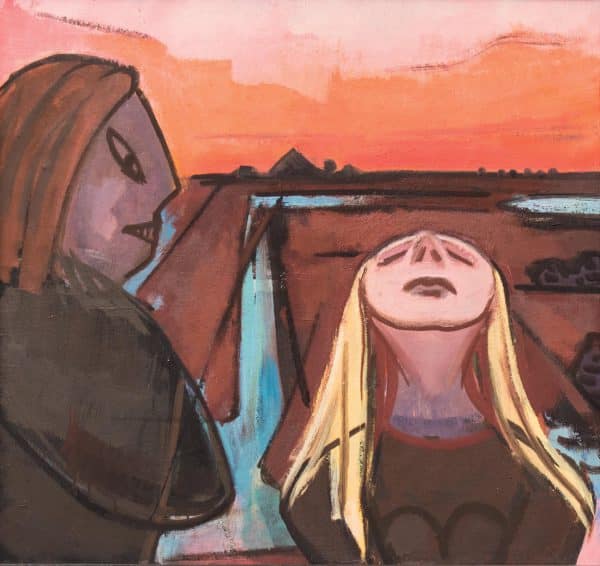

In 1916 Hinrichs was introduced to the Wandervogel group of the youth association Freideutsche Jugend by a renowned painter from his neighbourhood. Hinrichs decided to become a painter even before finishing school. After taking his final high-school exams in 1924, he moved to Munich, where he attended a private school for the visual arts that was run by Hans Hofmann. Hinrichs attended each winter semester from 1924 to 1929, and spent the summer months studying with his friend Hans Holtorf in Langballig in his home region. In 1927, Hinrichs travelled to Italy and stayed there for some time. He completed his studies in Munich in 1929, and then went to Rendsburg in Schleswig-Holstein to live as a freelance painter.
His works were exhibited regularly from 1932 onwards. In 1935, he set up the watercolour group of the Working Community of Kiel Artists, along with Leonore Vespermann and Hans Rickers. They exhibited their works together. After the Nazis assumed power in 1933, the Kiel Group initially suffered little censorship thanks to their Nordic and local topics. In mid-1936, Hinrichs was commissioned by the German Labour Front to paint political pictures for a workers’ art exhibition. But just a few months later, his solo exhibition at the Galerie von der Heyde in Berlin was banned on grounds of “degeneracy”. In spring 1939, Hinrichs’s paintings in the Galerie von der Heyde were once again the victims of the Nazi censors. That same year, he married Anna Marie Rosenstein from Hamburg. In August, Hinrichs was drafted into the German air force. He was later taken prisoner by the British. After his release in 1945, Hinrichs resumed work as a freelance artist, though he did not have any lasting success. In 1953, he began teaching art at the Free Waldorf School in Rendsburg.
